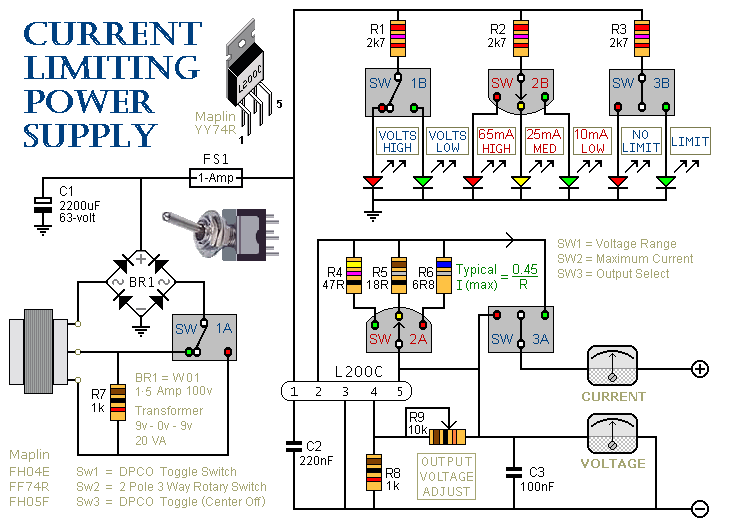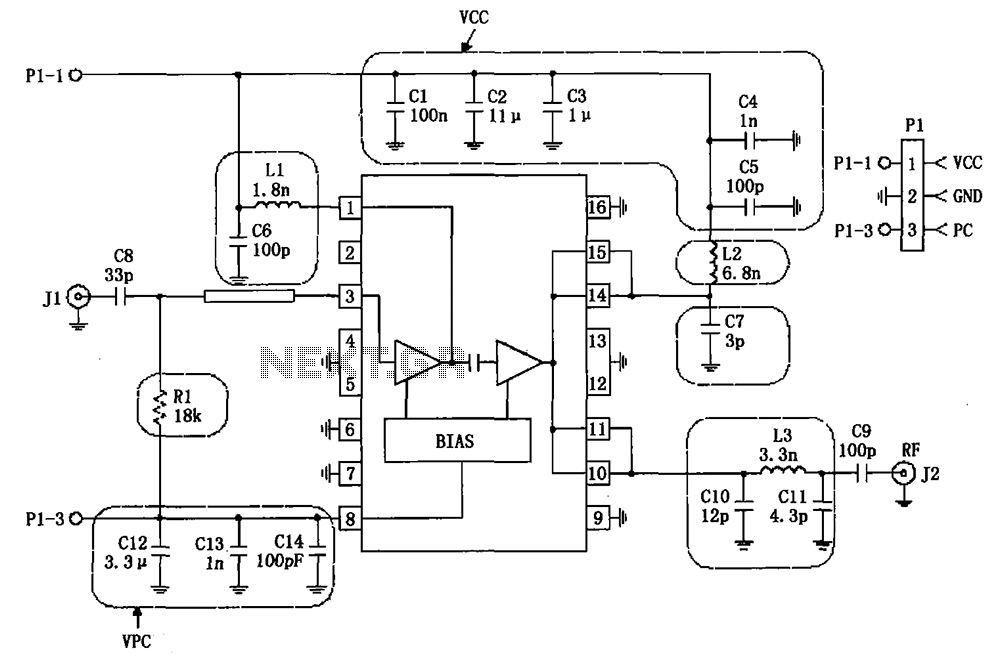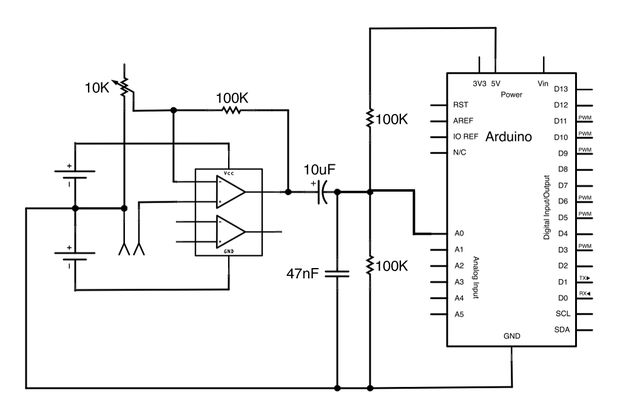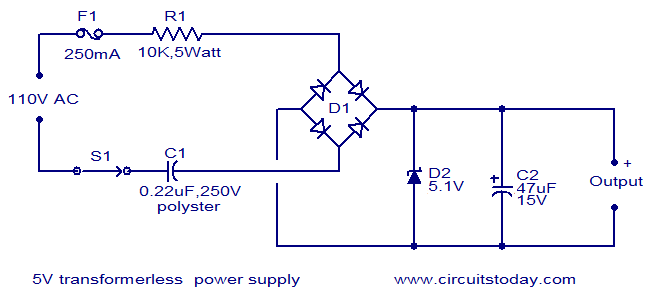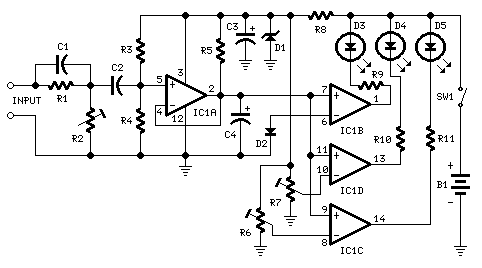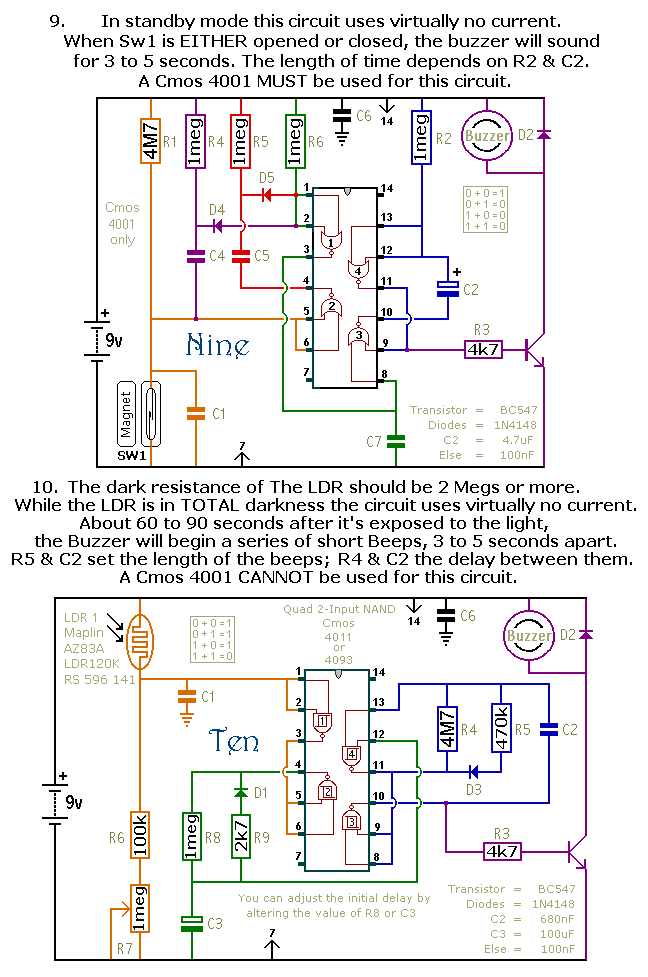
isolated mains power monitoring arduino
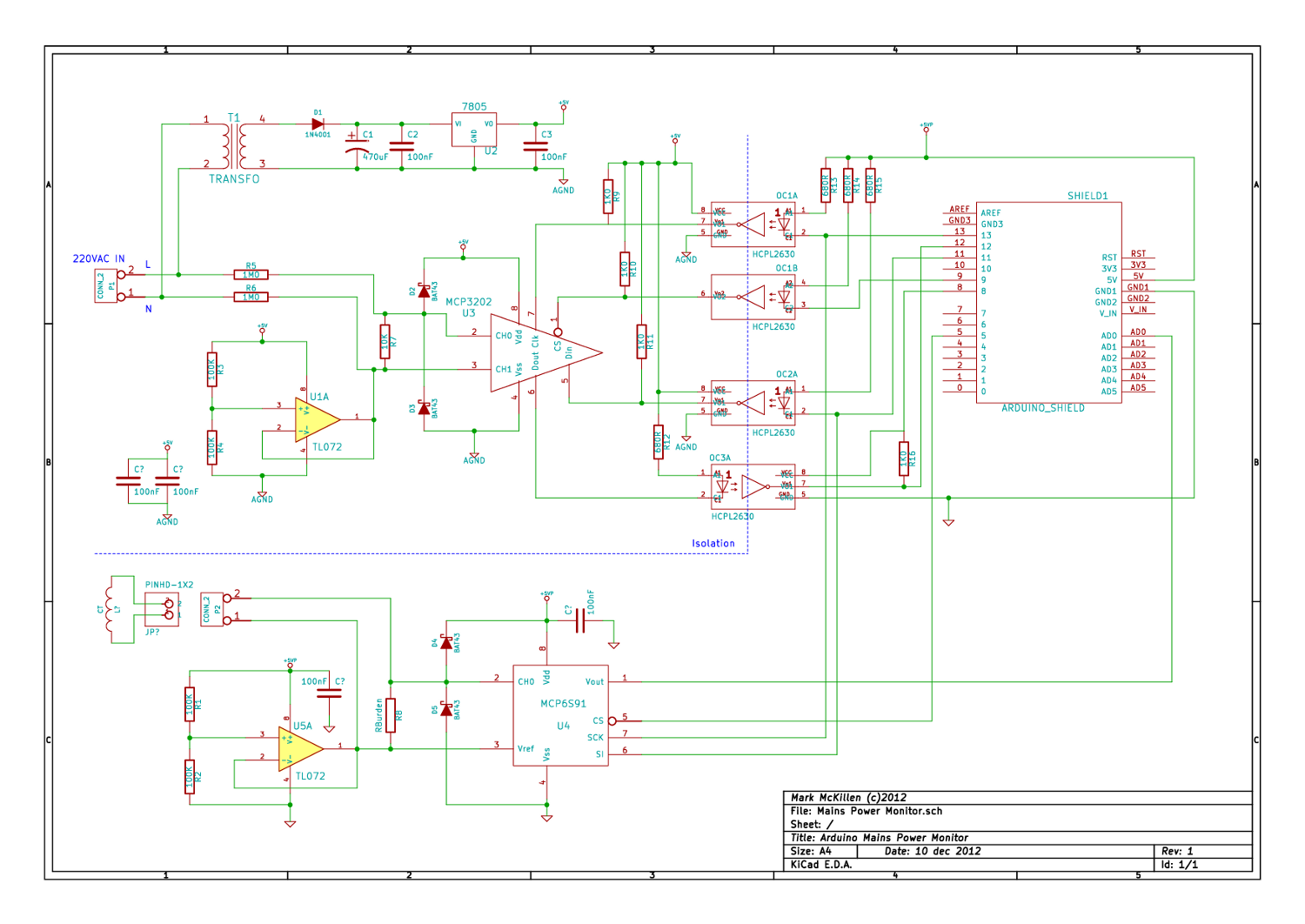
A mains (220-240VAC) power monitoring circuit has been sought for interfacing with an Arduino. While the OpenEnergyMonitor solution employs a transformer for isolation and measurement of mains voltage, it has been noted that the transformer does not couple effectively to the mains, resulting in a distorted voltage sine wave on the secondary side. Recently, a project by Dave Berkeley was discovered, featuring a design for a mains power usage monitor that directly measures line voltage. His Home Energy Monitor utilizes a dual-channel ADC with opto-isolation, providing an appealing solution. Although the original circuit design uses a 10-bit ADC (MPC2003), a 12-bit version (MPC3202) was selected due to availability issues, despite a lower conversion speed of 100ksps compared to 200ksps. The circuit design was created using KiCAD, and parts were ordered from RS. A PDF of the circuit diagram is available: Mains Power Monitor Circuit Diagram (rev 1.0). The original design included a voltage divider that was unclear; it featured 100K current-limiting resistors on the input lines and a divider composed of one of these and a 270Ω resistor. Simulation results indicated a voltage swing of 2.08 to 2.92 volts on the ADC with a 311V peak-to-peak AC input (which corresponds to 220VAC * sqrt(2)). In the revised design, 1MΩ resistors were used for current limiting, along with a divider made up of 1MΩ and 10KΩ, yielding a higher input voltage to the ADC.
The mains power monitoring circuit is designed to provide accurate measurements of voltage and power usage for applications interfacing with Arduino microcontrollers. The primary component of the circuit is a dual-channel Analog-to-Digital Converter (ADC), which is crucial for digitizing the analog voltage signals derived from the mains supply. The opto-isolation feature ensures that the low-voltage side of the circuit is electrically isolated from the high-voltage mains, thus enhancing safety and protecting the Arduino from potential overvoltage conditions.
The voltage measurement is accomplished through a voltage divider network, which reduces the high mains voltage to a safe level suitable for the ADC input. The choice of resistors in the divider is critical; the revised design employs a 1MΩ resistor for current limiting and a 10KΩ resistor to ensure that the voltage swing on the ADC input is maximized while maintaining the integrity of the measurement. This configuration allows for a peak input voltage of approximately 311V to be scaled down to a range that the ADC can handle without distortion.
The use of a 12-bit ADC (MPC3202) enhances the resolution of the measurements compared to the original 10-bit design. Although the sampling rate is reduced to 100ksps, this is generally sufficient for monitoring applications where high-speed data acquisition is not critical. The design can be simulated using software tools like KiCAD to visualize the circuit's behavior and validate its performance before physical implementation.
In summary, the mains power monitoring circuit provides a robust solution for measuring AC voltage and power consumption, suitable for integration with Arduino platforms. The careful selection of components, particularly the ADC and voltage divider, ensures accurate readings while maintaining safety and reliability in operation.I`ve been looking around for a mains (220-240VAC) power monitoring circuit that I might be able to interface with an Arduino. There is of course the OpenEnergyMonitor solution, but they seem to use a transformer to isolate and measure the mains voltage.
The transformer doesn`t exactly couple to the mains nicely: so the voltage on the secondary side is not a scaled voltage of the input side, the transformer itself will distort the voltage sine wave. Then over the weekend I came across Dave Berkeley`s Project Page, and he has a cool design for mains power usage monitor that does measure the line voltage directly. His Home Energy Monitor uses a dual channel ADC with opto-isolation, nice solution. There is loads of info over at his site, I`ve just changed a few little parts for my version. He uses a 10bit ADC [MPC2003] which I couldn`t get from RS, they were showing back order on the part, so I had a dig around and came up with a 12bit version of the same chip [MPC3202] just have to watch the conversion time, it`s not 200ksps but 100ksps, but I don`t see it being a problem (famous last words!).
So started up KiCAD and got work, then on to RS to get the parts! If you like a PDF of the circuit diagram here you go: Mains Power Monitor Circuit Diagram (rev 1. 0) On Dave`s circuit he has a voltage divider that I couldn`t make sense of, it looks like he has 100K current limiting resisters on the two input lines and a divider made up from one of these and a 270R. The simulation on this only gave a 2. 08 -> 2. 92 volt swing on the ADC, given a 311V peek to peek AC input [which is 220VAC * sqt(2)]. I`ve used 1M0 on the current limiting and a divider of 1M0 and 10K, which give a little more input to the ADC.
🔗 External reference
The mains power monitoring circuit is designed to provide accurate measurements of voltage and power usage for applications interfacing with Arduino microcontrollers. The primary component of the circuit is a dual-channel Analog-to-Digital Converter (ADC), which is crucial for digitizing the analog voltage signals derived from the mains supply. The opto-isolation feature ensures that the low-voltage side of the circuit is electrically isolated from the high-voltage mains, thus enhancing safety and protecting the Arduino from potential overvoltage conditions.
The voltage measurement is accomplished through a voltage divider network, which reduces the high mains voltage to a safe level suitable for the ADC input. The choice of resistors in the divider is critical; the revised design employs a 1MΩ resistor for current limiting and a 10KΩ resistor to ensure that the voltage swing on the ADC input is maximized while maintaining the integrity of the measurement. This configuration allows for a peak input voltage of approximately 311V to be scaled down to a range that the ADC can handle without distortion.
The use of a 12-bit ADC (MPC3202) enhances the resolution of the measurements compared to the original 10-bit design. Although the sampling rate is reduced to 100ksps, this is generally sufficient for monitoring applications where high-speed data acquisition is not critical. The design can be simulated using software tools like KiCAD to visualize the circuit's behavior and validate its performance before physical implementation.
In summary, the mains power monitoring circuit provides a robust solution for measuring AC voltage and power consumption, suitable for integration with Arduino platforms. The careful selection of components, particularly the ADC and voltage divider, ensures accurate readings while maintaining safety and reliability in operation.I`ve been looking around for a mains (220-240VAC) power monitoring circuit that I might be able to interface with an Arduino. There is of course the OpenEnergyMonitor solution, but they seem to use a transformer to isolate and measure the mains voltage.
The transformer doesn`t exactly couple to the mains nicely: so the voltage on the secondary side is not a scaled voltage of the input side, the transformer itself will distort the voltage sine wave. Then over the weekend I came across Dave Berkeley`s Project Page, and he has a cool design for mains power usage monitor that does measure the line voltage directly. His Home Energy Monitor uses a dual channel ADC with opto-isolation, nice solution. There is loads of info over at his site, I`ve just changed a few little parts for my version. He uses a 10bit ADC [MPC2003] which I couldn`t get from RS, they were showing back order on the part, so I had a dig around and came up with a 12bit version of the same chip [MPC3202] just have to watch the conversion time, it`s not 200ksps but 100ksps, but I don`t see it being a problem (famous last words!).
So started up KiCAD and got work, then on to RS to get the parts! If you like a PDF of the circuit diagram here you go: Mains Power Monitor Circuit Diagram (rev 1. 0) On Dave`s circuit he has a voltage divider that I couldn`t make sense of, it looks like he has 100K current limiting resisters on the two input lines and a divider made up from one of these and a 270R. The simulation on this only gave a 2. 08 -> 2. 92 volt swing on the ADC, given a 311V peek to peek AC input [which is 220VAC * sqt(2)]. I`ve used 1M0 on the current limiting and a divider of 1M0 and 10K, which give a little more input to the ADC.
🔗 External reference
